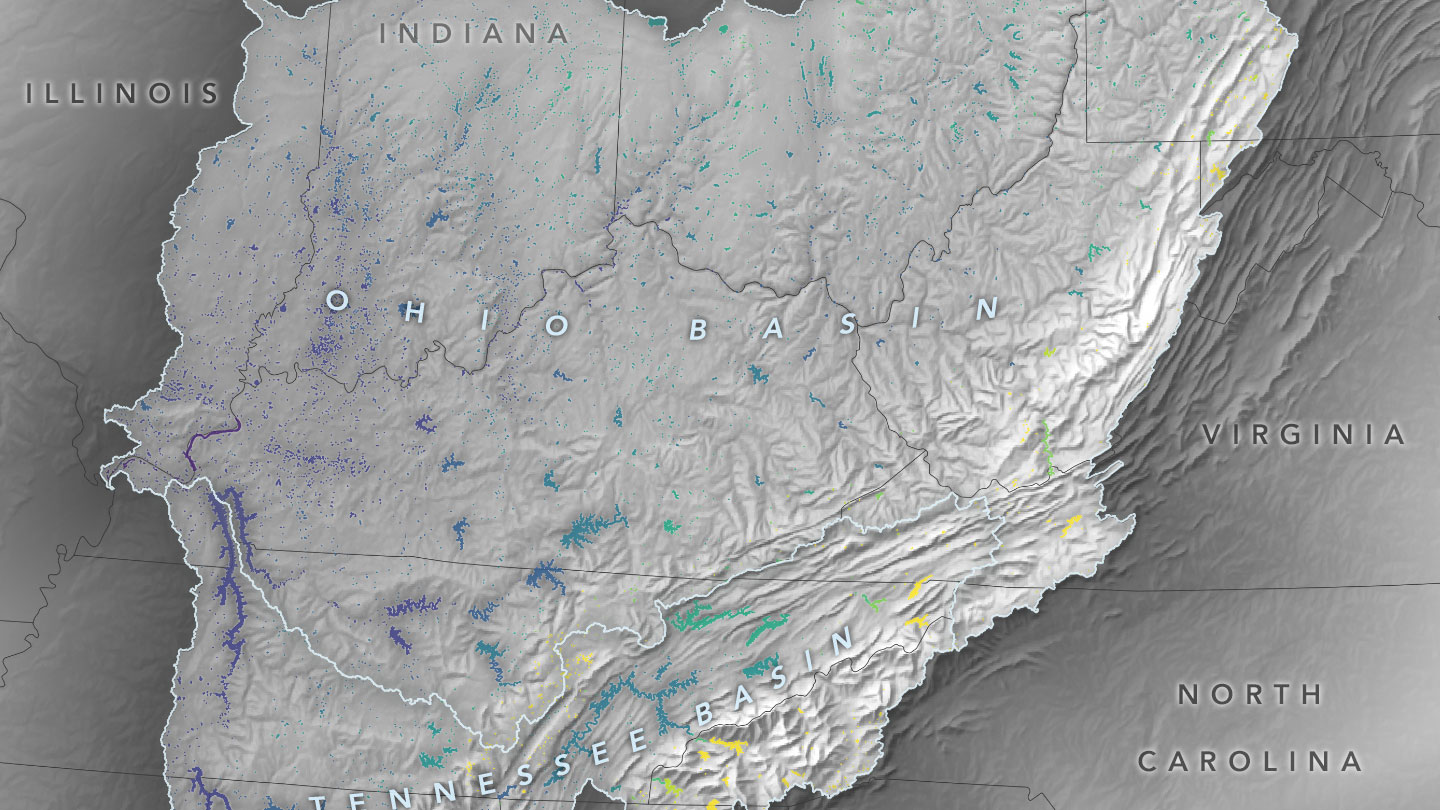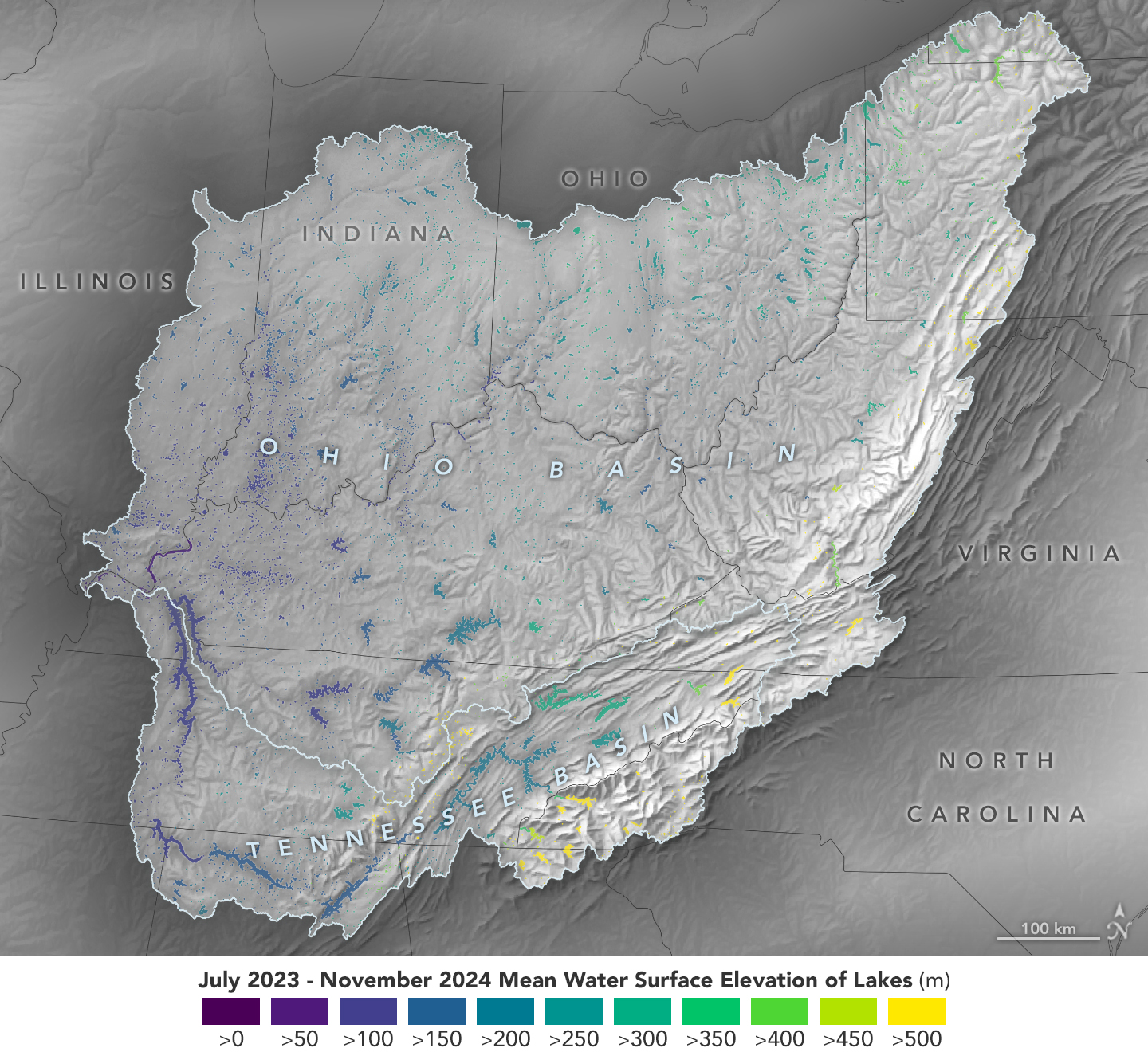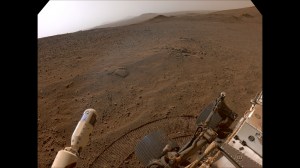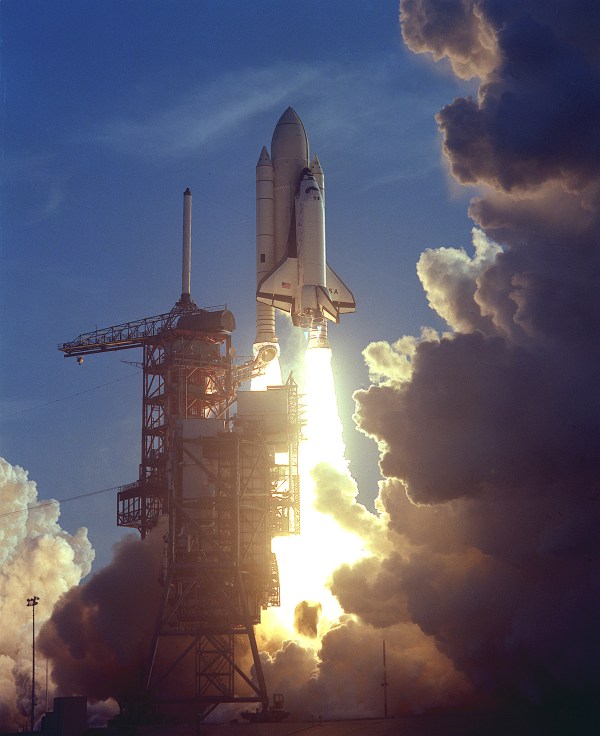Cutting-Edge Satellite Tracks Lake Water Levels in Ohio River Basin
Data from the U.S.-European Surface Water and Ocean Topography mission gives researchers a detailed look at lakes and reservoirs in a U.S. watershed. The Ohio River Basin stretches from Pennsylvania to Illinois and contains a system of reservoirs, lakes, and rivers that drains an area almost as large as France. Researchers with the SWOT (Surface […]

5 min read
Preparations for Next Moonwalk Simulations Underway (and Underwater)

Data from the U.S.-European Surface Water and Ocean Topography mission gives researchers a detailed look at lakes and reservoirs in a U.S. watershed.
The Ohio River Basin stretches from Pennsylvania to Illinois and contains a system of reservoirs, lakes, and rivers that drains an area almost as large as France. Researchers with the SWOT (Surface Water and Ocean Topography) mission, a collaboration between NASA and the French space agency CNES (Centre National d’Études Spatiales), now have a new tool for measuring water levels not only in this area, which is home to more than 25 million people, but in other watersheds around the world as well.
Since early 2023, SWOT has been measuring the height of nearly all water on Earth’s surface — including oceans, lakes, reservoirs, and rivers — covering nearly the entire globe at least once every 21 days. The SWOT satellite also measures the horizontal extent of water in freshwater bodies. Earlier this year, the mission started making validated data publicly available.
“Having these two perspectives — water extent and levels — at the same time, along with detailed, frequent coverage over large areas, is unprecedented,” said Jida Wang, a hydrologist at the University of Illinois Urbana-Champaign and a member of the SWOT science team. “This is a groundbreaking, exciting aspect of SWOT.”
Researchers can use the mission’s data on water level and extent to calculate how the amount of water stored in a lake or reservoir changes over time. This, in turn, can give hydrologists a more precise picture of river discharge — how much water moves through a particular stretch of river.
The visualization above uses SWOT data from July 2023 to November 2024 to show the average water level above sea level in lakes and reservoirs in the Ohio River Basin, which drains into the Mississippi River. Yellow indicates values greater than 1,600 feet (500 meters), and dark purple represents water levels less than 330 feet (100 meters). Comparing how such levels change can help hydrologists measure water availability over time in a local area or across a watershed.
Complementing a Patchwork of Data
Historically, estimating freshwater availability for communities within a river basin has been challenging. Researchers gather information from gauges installed at certain lakes and reservoirs, from airborne surveys, and from other satellites that look at either water level or extent. But for ground-based and airborne instruments, the coverage can be limited in space and time. Hydrologists can piece together some of what they need from different satellites, but the data may or may not have been taken at the same time, or the researchers might still need to augment the information with measurements from ground-based sensors.
Even then, calculating freshwater availability can be complicated. Much of the work relies on computer models. “Traditional water models often don’t work very well in highly regulated basins like the Ohio because they have trouble representing the unpredictable behavior of dam operations,” said George Allen, a freshwater researcher at Virginia Tech in Blacksburg and a member of the SWOT science team.
Many river basins in the United States include dams and reservoirs managed by a patchwork of entities. While the people who manage a reservoir may know how their section of water behaves, planning for water availability down the entire length of a river can be a challenge. Since SWOT looks at both rivers and lakes, its data can help provide a more unified view.
“The data lets water managers really know what other people in these freshwater systems are doing,” said SWOT science team member Colin Gleason, a hydrologist at the University of Massachusetts Amherst.
While SWOT researchers are excited about the possibilities that the data is opening up, there is still much to be done. The satellite’s high-resolution view of water levels and extent means there is a vast ocean of data that researchers must wade through, and it will take some time to process and analyze the measurements.
More About SWOT
The SWOT satellite was jointly developed by NASA and CNES, with contributions from the Canadian Space Agency (CSA) and the UK Space Agency. NASA’s Jet Propulsion Laboratory, managed for the agency by Caltech in Pasadena, California, leads the U.S. component of the project. For the flight system payload, NASA provided the Ka-band radar interferometer (KaRIn) instrument, a GPS science receiver, a laser retroreflector, a two-beam microwave radiometer, and NASA instrument operations. The Doppler Orbitography and Radioposition Integrated by Satellite system, the dual frequency Poseidon altimeter (developed by Thales Alenia Space), the KaRIn radio-frequency subsystem (together with Thales Alenia Space and with support from the UK Space Agency), the satellite platform, and ground operations were provided by CNES. The KaRIn high-power transmitter assembly was provided by CSA.
To learn more about SWOT, visit:
News Media Contacts
Jane J. Lee / Andrew Wang
Jet Propulsion Laboratory, Pasadena, Calif.
818-354-0307 / 626-379-6874
jane.j.lee@jpl.nasa.gov / andrew.wang@jpl.nasa.gov
2024-176
Share
Details
Related Terms
What's Your Reaction?



















.jpg?#)







































